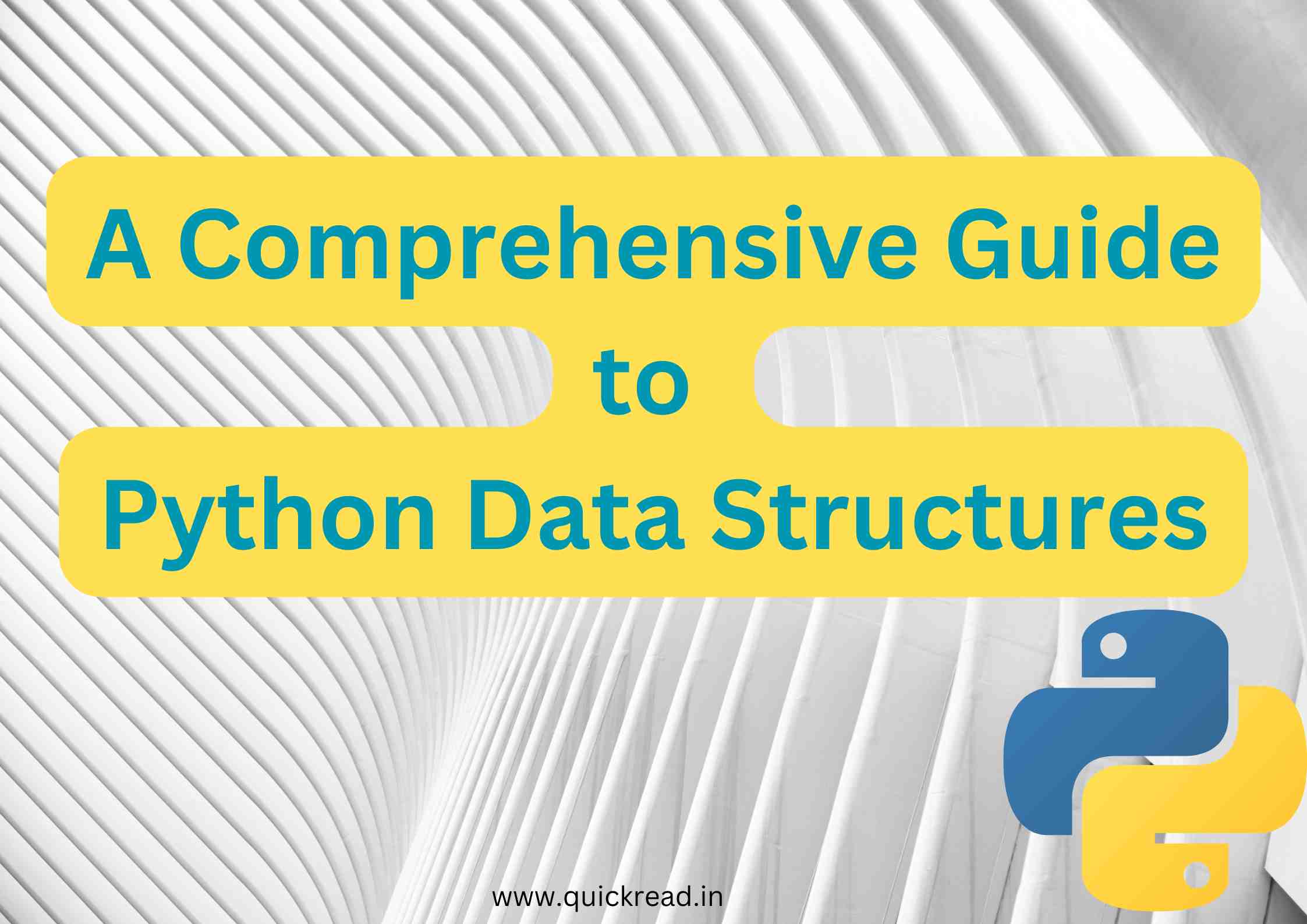Introduction
Data structures provide the fundamental building blocks for managing data in Python programs. Choosing the right data structure leads to efficient algorithms and reduced complexity.
In this guide, we’ll explore the essential Python data structures available with tips on when and how to use them effectively.
Python Data Structures
Python Lists
Python lists store sequences of arbitrary objects. They are:
- Ordered collections indexed by number
- Mutable – elements can be added/removed
- Allows duplicates
- Heterogeneous – can mix element types
Lists support fast appends and pops from the end with O(1) speed. But insertion and removal at the front or middle is O(N).
values = [5, 3, 8, 4]
values.append(10) # [5, 3, 8, 4, 10]
values.pop(1) # [5, 8, 4, 10]
values.sort() # [3, 4, 5, 8, 10]Lists suit most everyday sequential storage needs.
Python Tuples
Python Tuples are like immutable lists. Once created, the elements can’t be modified. Tuples are:
- Ordered sequences of fixed length
- Immutable – can’t add/remove elements
- Allow duplicates
- Indexable, sliceable – 0 to N-1
The immutability makes tuples suitable for cases where you need data that won’t change, like configuration or constants.
point = (3, 7)
print(point[1]) # 7Also, tuples can be keys in dictionaries since they are immutable. Overall tuples balance utility, performance, and minimalism.
Python Dictionaries
Python Dictionaries are maps of key-value pairs. They are excellent for lookups by key. Dictionaries are:
- Unordered collections of key-value pairs
- Keys must be hashable – numbers, strings, tuples
- Mutable – values can be modified
- Efficient lookup by key with near O(1) speed
Dicts are ideal for storing related attributes for objects and quick lookups.
user = {
'name': 'John',
'email': 'john@email.com'
}
print(user['email']) # Prints 'john@email.com'Underlying hash tables enable fast access regardless of dict size.
Sets
Sets represent unordered collections of distinct objects. They are commonly used for:
- Checking membership with O(1) lookups
- Removing duplicates
Sets are mutable and can add/remove elements. Mathematical set operations like union, intersection, and difference are supported.
colors = {'red', 'blue', 'green'}
'red' in colors # True
colors.add('purple')
colors.remove('red')The unique, unordered nature make sets shine for membership testing, duplicate removal, and mathematical operations.
Stacks
Stacks are Last In First Out (LIFO) data structures for managing sequentially accessed data. Operations are O(1).
stack = []
stack.append(1) # Push
stack.append(2)
print(stack.pop()) # 2 - Top element
print(stack) # [1] - Last instacks suit:
- Undo/redo functionality
- Reversing stack to access in LIFO order
- Temporarily storing data
- Any algorithm requiring LIFO behavior
Python Queues
Queues are First In First Out (FIFO) structures optimized for adding and removing elements in order. Common methods:
- put() – Add to back
- get() – Remove from front
- peek() – Check front without removing
This FIFO behavior makes queues ideal for:
- Job processing pipelines
- Printing/task scheduling
- Breadth-first search
- Rate limiting or throttling
- Traffic shaping algorithms
Both stacks and queues provide first-class primitives for properly sequencing data.
Heaps
Heaps are tree-based structures optimized for retrieving the min or max element quickly. Heaps are:
- Complete binary tree
- Min heap – Parent smaller than children
- Max heap – Parent larger than children
Core methods:
- heappush() – Insert element
- heappop() – Remove smallest item
- heapify() – Convert list into heap
Applications include:
- Priority queues
- Graph algorithms like Dijkstra’s
- Sorting data in chunks
- Implementing schedulers
The quick access to extremes makes heaps essential for priority-based algorithms.
Deques
Deques (double-ended queues) enable efficient insertion/removal from both front and back. Deques support:
- appendleft()/popleft() – Back additions/removals
- append()/pop() – Front additions/removals
Deques are highly optimized for manipulating elements at both boundaries, making them ideal for:
- Queue and stack at the same time
- Rotating elements
- Skipping recursive depth limits by moving roots
Deques excel at dynamic access from both directions.
Conclusion
Python ships with a wide array of essential data structures optimized for different use cases. Learn the strengths of each to pick the right structure and write efficient code.
Typical types like lists, dicts, and sets provide the backbone for everyday programs. Specialized types like queues, stacks, and heaps enable more complex algorithms.
Master Python’s versatile data structures to build faster and more Pythonic applications.
Frequently Asked Questions
Q: When should I use tuples over lists in Python?
A: Use tuples for immutable data like fixed constants. Lists are better for mutable contents.
Q: What are some of the most common uses for dictionaries in Python?
A: Storing object attributes, caching, default arguments, memoization, data about specific keys or topics.
Q: How do sets differ from lists or tuples?
A: Sets are unordered and contain only unique elements. Lists/tuples can have duplicates and are ordered.
Q: What are some alternatives to Python’s built-in data structures?
A: NumPy arrays for scientific computing, Pandas for data analysis, and blist/sortedcontainers for high performance.
Q: When would I use a deque instead of a regular queue?
A: Accessing both ends efficiently with appendleft/popleft make deques superior for several queue algorithms.


